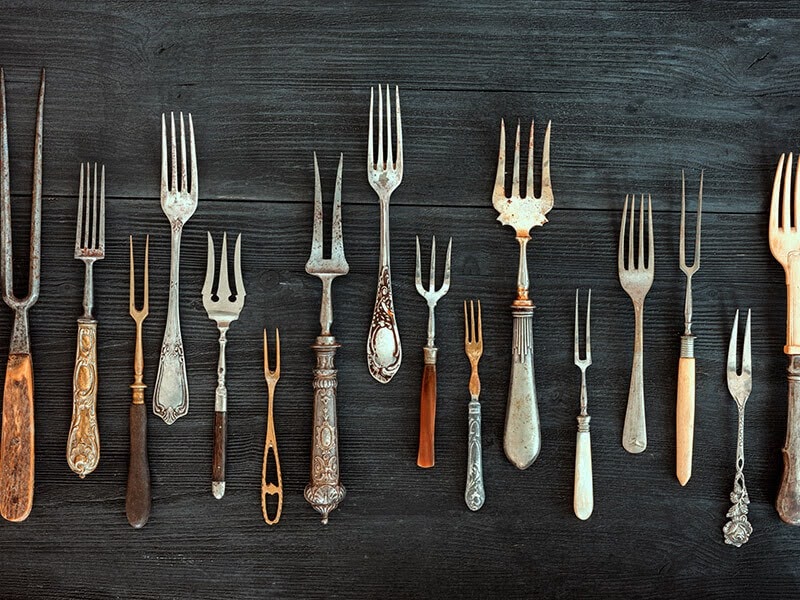Introduction
The humble fork, an essential utensil in every kitchen, comes in various shapes and sizes, each designed for a specific purpose. From the traditional dinner fork to specialized forks for seafood or desserts, understanding the different types of forks can enhance your dining experience. In this article, we will delve into the world of forks, exploring 12 distinct varieties, their unique features, and the occasions that call for their use.
1. Dinner Fork
The dinner fork, also known as the table fork, is the most common type used for everyday meals. It features four tines and a standard length, making it versatile for various foods, from main courses to salads.
2. Salad Fork
Slightly smaller than a dinner fork, the salad fork has three tines and is typically used for lighter dishes like salads or appetizers. Its shorter size allows for ease of use when navigating through greens and other delicate ingredients.
3. Dessert Fork
Designed for enjoying sweet treats, the dessert fork is smaller than a dinner fork with three or four tines. Its compact size makes it ideal for indulging in cakes, pies, and other delectable desserts.
4. Fish Fork
Featuring a long, slender design, the fish fork is specifically crafted for enjoying fish dishes. Its narrow tines allow for precise handling of fish and its accompanying bones. The shape of the fish fork’s tines makes it easy to separate the flesh from the skin and bones.
5. Oyster Fork
The oyster fork is a small, narrow fork designed for extracting and enjoying oysters. Its shorter tines and sturdy construction make it ideal for delicately prying open shells and scooping out the succulent meat.
6. Cocktail Fork
The cocktail fork is a handy utensil used for spearing and enjoying bite-sized appetizers, such as olives, pickles, or small cheese cubes. It typically features two or three tines and is shorter than a regular dinner fork.
7. Fruit Fork
The fruit fork is a dainty utensil designed for consuming fruit salads or individual fruits. It is smaller than a regular fork, with shorter and slightly curved tines, facilitating easy piercing and picking up of bite-sized fruit pieces.
8. Carving Fork
The carving fork is a robust and sturdy fork with long, sharp tines, used for holding and stabilizing meat while carving. Its strong grip prevents the meat from slipping, enabling precise and controlled slicing.
9. Pastry Fork
The pastry fork, also known as a cake fork, is specifically designed for enjoying pastries, cakes, and other baked goods. It typically features a slightly curved shape and may have serrated tines to aid in cutting through delicate pastries.
10. Spaghetti Fork
The spaghetti fork, with its long, pronged tines, is ideal for twirling and serving long strands of pasta. Its design allows for better control and prevents the pasta from sliding off the fork while enjoying a delicious Italian meal.
11. Salad Serving Fork
The salad serving fork is a large, two-pronged utensil used for serving salads from a bowl or platter. Its broad, flat tines facilitate easy scooping and serving of salad ingredients without damaging delicate greens.
12. Fondue Fork
Specifically designed for fondue parties, the fondue fork features a long handle with a single long
tine. It is used for dipping and retrieving bite-sized pieces of food from a communal pot of melted cheese, chocolate, or other fondue delights.
Conclusion
From the versatile dinner fork to the specialized oyster fork and fondue fork, the world of forks offers a wide array of options for every culinary occasion. Understanding the unique features and purposes of each type can elevate your dining experience and ensure proper etiquette. So, the next time you set the table or attend a special event, embrace the appropriate fork, allowing you to savor each dish with grace and precision.
